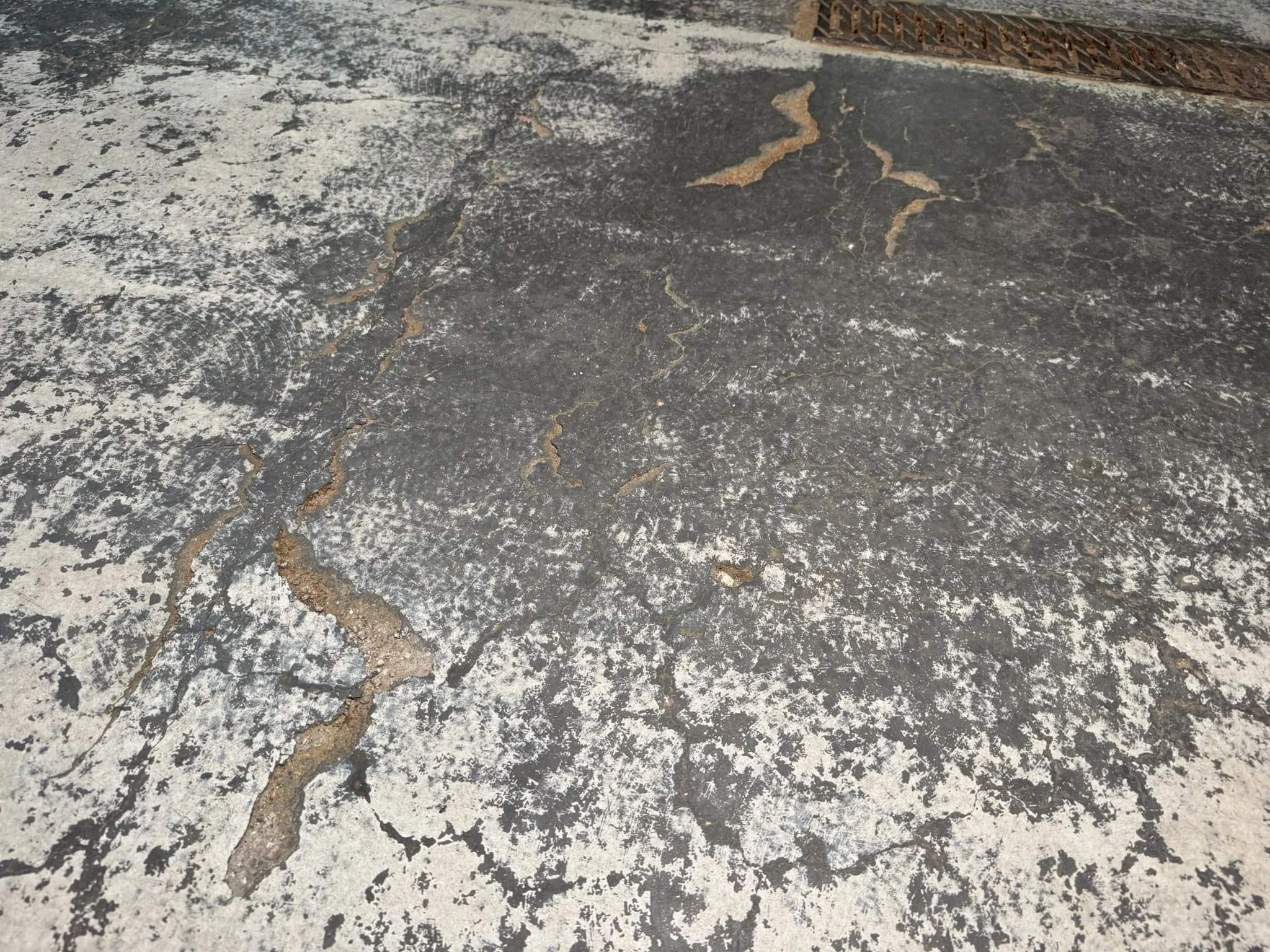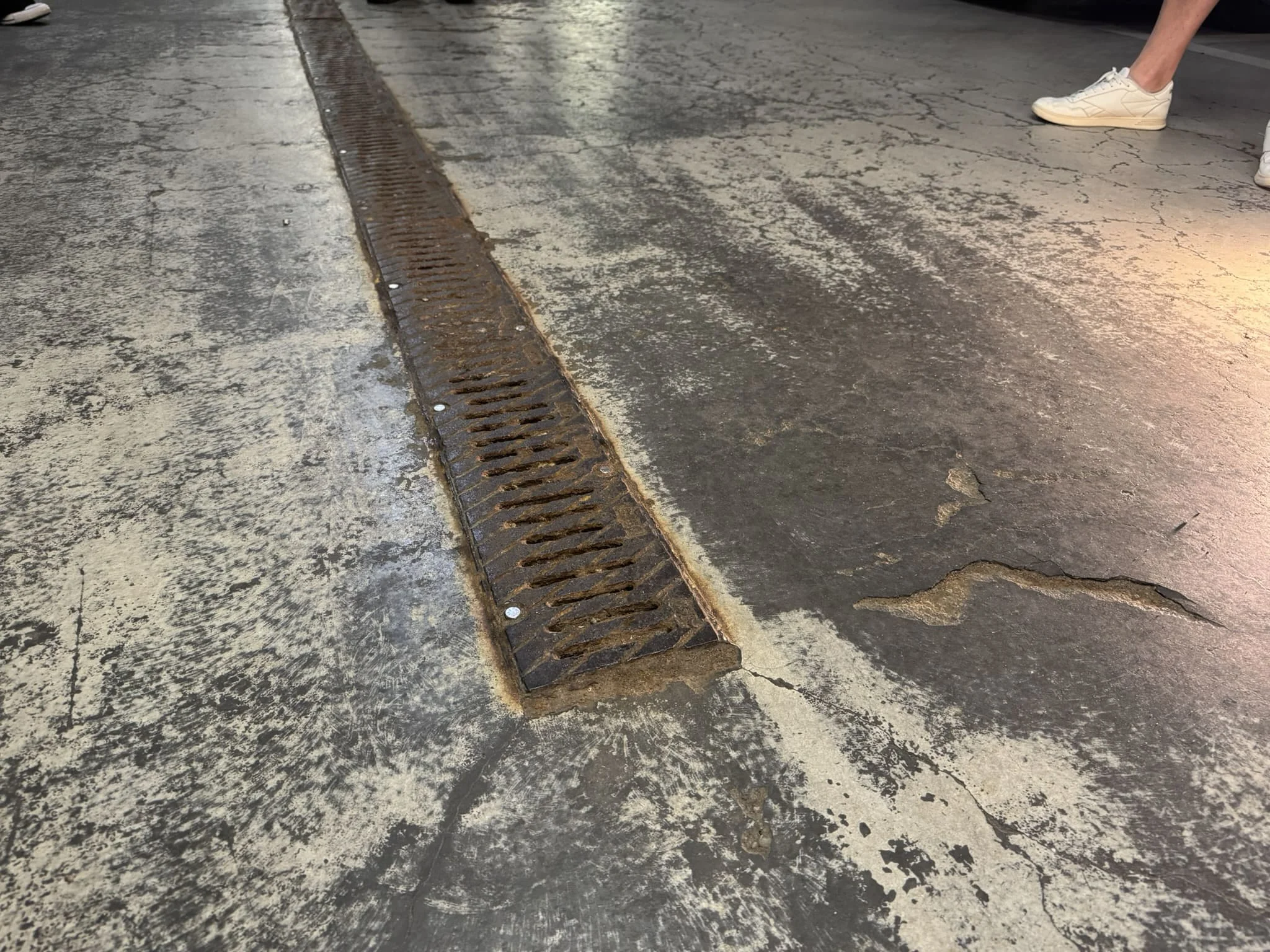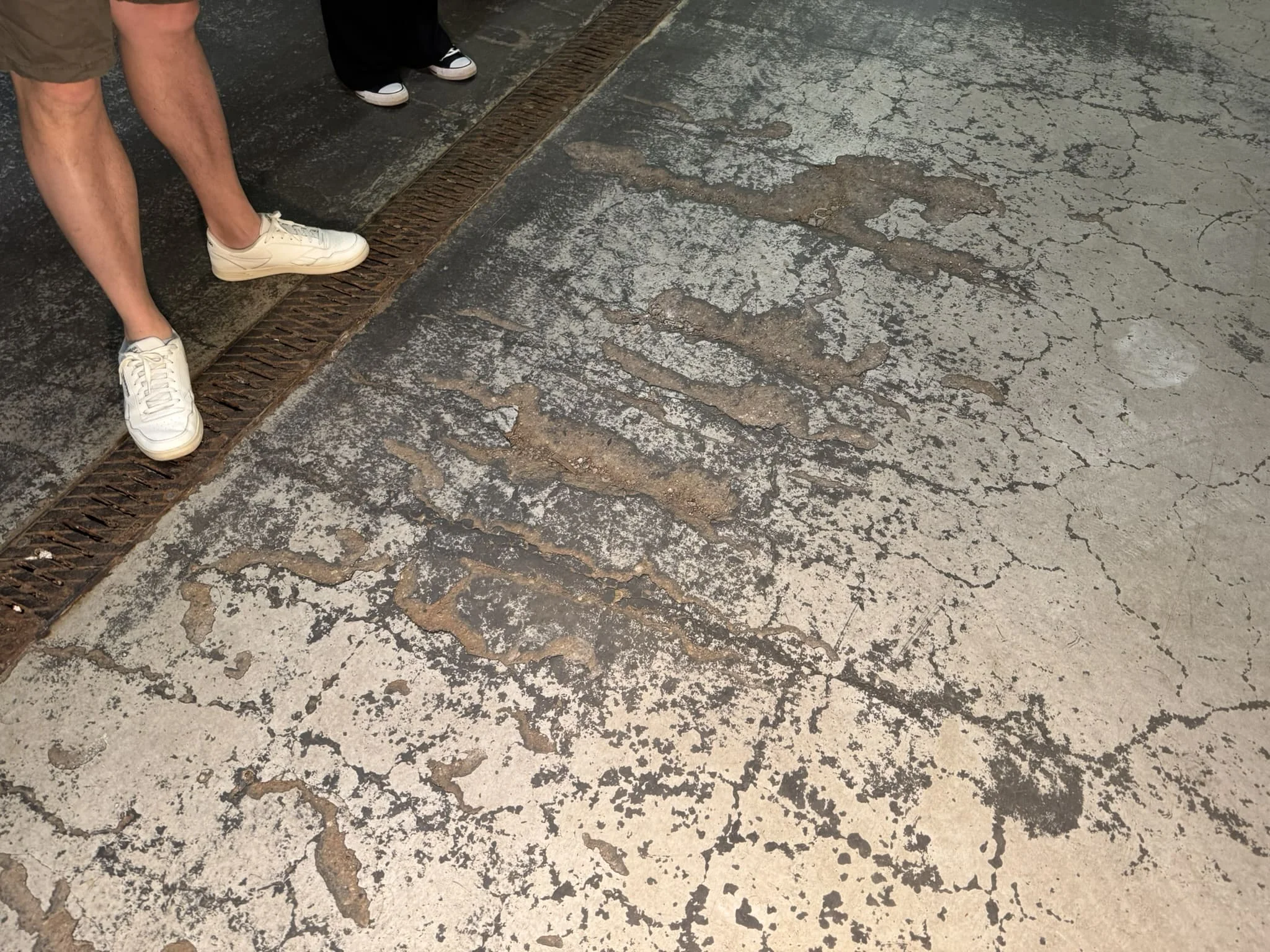Exposed reinforcement during industrial floor repairs
Industrial floors are an integral part of production halls, warehouses, logistics centers and underground parking lots.
Every day, they are exposed to intense mechanical stress, chemical agents, and temperature changes. Over time, damage can occur, such as scratches, cracks, or voids. One of the most serious problems in floor repair is exposed reinforcement, which threatens both the durability and safety of the floor. Below, we present the causes of this phenomenon, the consequences, and proven repair methods.
Exposed reinforcement during floor repairs occurs when steel rods that reinforce the structure begin to protrude from the concrete surface. The most common causes of this phenomenon include: Mechanical damage – resulting from intense forklift traffic or the fall of heavy objects. Improper floor construction – insufficient reinforcement cover or a poorly designed concrete mix. Corrosion of reinforcement – caused by moisture and chemicals penetrating the floor through cracks and voids. Overloading and material fatigue – long-term use leads to the gradual weakening of the concrete structure.
Exposed reinforcement not only negatively impacts the aesthetics of polished concrete, but above all, its functionality and safety. Accelerated corrosion of steel bars – contact with water and salts accelerates its rusting, leading to concrete splitting. Reduced load-bearing capacity of the structure – progressive degradation of the reinforcement results in reduced load-bearing capacity. Hazard to users – exposed bars can pose a hazard to people moving around the facility.

The first step is a thorough diagnosis – determine the extent of exposed reinforcement and the level of moisture and steel degradation. The damaged section of concrete industrial floor should be cleaned of loose particles, dust, and concrete debris. Mechanically clean the reinforcement of rust, preferably using a wire brush or appropriate pneumatic tools.
Anti-corrosion protection of the reinforcement: Cleaned steel should be coated with an anti-corrosion agent to prevent further rust development. To rebuild the cover, the exposed surface should be filled with a suitable floor repair mortar based on cement or special resins, which will ensure proper adhesion to the existing floor and protect the reinforcement.
Leveling and Finishing After the floor repair material has set, the surface should be leveled and, if necessary, covered with a thin-layer flooring or resin layer to increase resistance to abrasion and chemical agents. To avoid further damage, it is worth following a few rules. Regularly inspect the floor's technical condition and make ongoing repairs. Use appropriate repair materials with high strength and abrasion resistance parameters. Ensure good ventilation and limit contact of the floor with water and chemicals.
Repairing industrial flooring with exposed reinforcement is a process that requires knowledge, experience, and the use of appropriate materials. Prompt intervention helps avoid major damage and extends the life of the entire structure. Regardless of the extent of the damage, in the case of exposed reinforcement, it is worth considering consulting a company specializing in this type of repair to restore the floor to its original technical and functional properties.

Open reinforcement in an old concrete floor – how to protect the reinforcement?
Renovations and modernization of old concrete floors often involve the need to perform work that exposes the structural reinforcement.
Such situations require appropriate action to prevent further degradation of the steel bars and maintain the durability and safety of the floor without industrial floor repair. In this article, we discuss what exposed reinforcement in old concrete floors is and present methods for securing exposed steel bars.
Reinforcement (steel rods or mesh) embedded in concrete is protected by the material's alkaline environment, which normally prevents corrosion of the steel. However, when concrete or resin floors are damaged, for example, by cracks, poor maintenance, moisture, or aggressive chemicals, the steel loses its protection and begins to rust. This process is particularly rapid when the rods are exposed during cutting, chiseling, drilling, or floor replacement.
Leaving the exposed reinforcement unprotected exposes the structure to further corrosion, which leads to weakening of the bars, increasing damage to the concrete thin-layer commercial cement floor (corrosion causes the weakened protective layer to burst and further loosen), shorter lifespan of the entire floor, and increased future repair costs.

Remove any loose concrete, rust, cement laitance, and other contaminants to expose bare metal. The best floor repair results are achieved by mechanical brushing (wire brush, sandblasting) or grinding. For heavily corroded rebar, it is recommended to use rust removers – depending on the manufacturer, these products can neutralize rust and transform it into a protective layer. Degrease the steel surface. Degrease the rebar, e.g., with mineral spirits or acetone, to improve the adhesion of subsequent protective layers.
Apply a special anti-corrosion agent designed for steel reinforcement (e.g., cement-polymer paints, cement-based coatings with corrosion inhibitors, or special epoxy resins) to the cleaned, dry bars. This agent not only protects the steel but also acts as an adhesive bridge between the steel and the concrete being repaired.
Repair and reconstruction of the concrete cover industrial floor, after applying the anti-corrosion coating – according to the manufacturer's recommendations (usually after 2-6 hours) – the exposed reinforcement is filled with an appropriate concrete repair mortar. This mortar should be characterized by high adhesion, low permeability, and appropriate strength parameters. In some cases, the use of products with added fibers or polymers is recommended to increase the durability of the repair. The minimum thickness of the concrete cover must also be maintained, in accordance with construction standards (for typical floors, this is usually at least 15-20 mm).
Protect the new mortar from drying out too quickly, for example, by covering it with foil or using special care products. Don't forget to protect your work and the use of safety barriers.
Repairing a floor with exposed reinforcement in an old concrete floor should not be left unprotected. Proper cleaning, anti-corrosion protection, and proper repair of the concrete cover guarantee the durability of the repair and the safety of the floor. All work should be carried out in accordance with the recommendations of the repair material manufacturers and construction standards. If in doubt, it is recommended to consult a structural engineer or a specialist in reinforced concrete repair.





